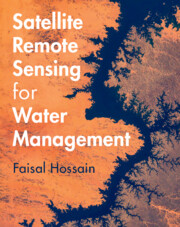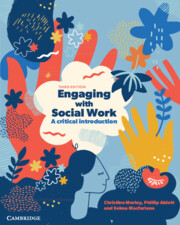Refine search
Actions for selected content:
37413 results in Cambridge Textbooks

Understanding International Security
- Theory and Practice
-
- Published online:
- 11 October 2025
- Print publication:
- 30 October 2025
-
- Textbook
- Export citation

Satellite Remote Sensing for Water Management
-
- Published online:
- 10 October 2025
- Print publication:
- 04 September 2025
-
- Textbook
- Export citation

Engaging with Social Work
- A Critical Introduction
-
- Published online:
- 09 October 2025
- Print publication:
- 23 October 2025
-
- Textbook
- Export citation
10 - The Evolution of Language
-
- Book:
- Evolutionary Psychology
- Published online:
- 30 October 2025
- Print publication:
- 09 October 2025, pp 261-296
-
- Chapter
- Export citation
8 - The Evolutionary Psychology of Social Behaviour: Reciprocity and Conflict
-
- Book:
- Evolutionary Psychology
- Published online:
- 30 October 2025
- Print publication:
- 09 October 2025, pp 195-225
-
- Chapter
- Export citation
Index
-
- Book:
- Evolutionary Psychology
- Published online:
- 30 October 2025
- Print publication:
- 09 October 2025, pp 486-492
-
- Chapter
- Export citation
5 - Cognitive Development, Modularity and Innateness
-
- Book:
- Evolutionary Psychology
- Published online:
- 30 October 2025
- Print publication:
- 09 October 2025, pp 117-140
-
- Chapter
- Export citation
14 - The Evolution of Culture
-
- Book:
- Evolutionary Psychology
- Published online:
- 30 October 2025
- Print publication:
- 09 October 2025, pp 404-433
-
- Chapter
- Export citation
9 - Evolution, Thought and Cognition
-
- Book:
- Evolutionary Psychology
- Published online:
- 30 October 2025
- Print publication:
- 09 October 2025, pp 226-260
-
- Chapter
- Export citation
12 - Evolutionary Psychopathology and Darwinian Medicine
-
- Book:
- Evolutionary Psychology
- Published online:
- 30 October 2025
- Print publication:
- 09 October 2025, pp 329-368
-
- Chapter
- Export citation
Foreword
-
- Book:
- Evolutionary Psychology
- Published online:
- 30 October 2025
- Print publication:
- 09 October 2025, pp xxi-xxii
-
- Chapter
- Export citation
2 - Principles of Evolutionary Change
-
- Book:
- Evolutionary Psychology
- Published online:
- 30 October 2025
- Print publication:
- 09 October 2025, pp 30-55
-
- Chapter
- Export citation
Boxes
-
- Book:
- Evolutionary Psychology
- Published online:
- 30 October 2025
- Print publication:
- 09 October 2025, pp xviii-xx
-
- Chapter
- Export citation
4 - The Evolution of Human Mate Choice
-
- Book:
- Evolutionary Psychology
- Published online:
- 30 October 2025
- Print publication:
- 09 October 2025, pp 82-116
-
- Chapter
- Export citation
11 - The Evolution of Emotion
-
- Book:
- Evolutionary Psychology
- Published online:
- 30 October 2025
- Print publication:
- 09 October 2025, pp 297-328
-
- Chapter
- Export citation
13 - Evolution and Individual Differences
-
- Book:
- Evolutionary Psychology
- Published online:
- 30 October 2025
- Print publication:
- 09 October 2025, pp 369-403
-
- Chapter
- Export citation
Tables
-
- Book:
- Evolutionary Psychology
- Published online:
- 30 October 2025
- Print publication:
- 09 October 2025, pp xvii-xvii
-
- Chapter
- Export citation
3 - Sexual Selection
-
- Book:
- Evolutionary Psychology
- Published online:
- 30 October 2025
- Print publication:
- 09 October 2025, pp 56-81
-
- Chapter
- Export citation
Contents
-
- Book:
- Evolutionary Psychology
- Published online:
- 30 October 2025
- Print publication:
- 09 October 2025, pp vii-viii
-
- Chapter
- Export citation
Dedication
-
- Book:
- Evolutionary Psychology
- Published online:
- 30 October 2025
- Print publication:
- 09 October 2025, pp v-vi
-
- Chapter
- Export citation
